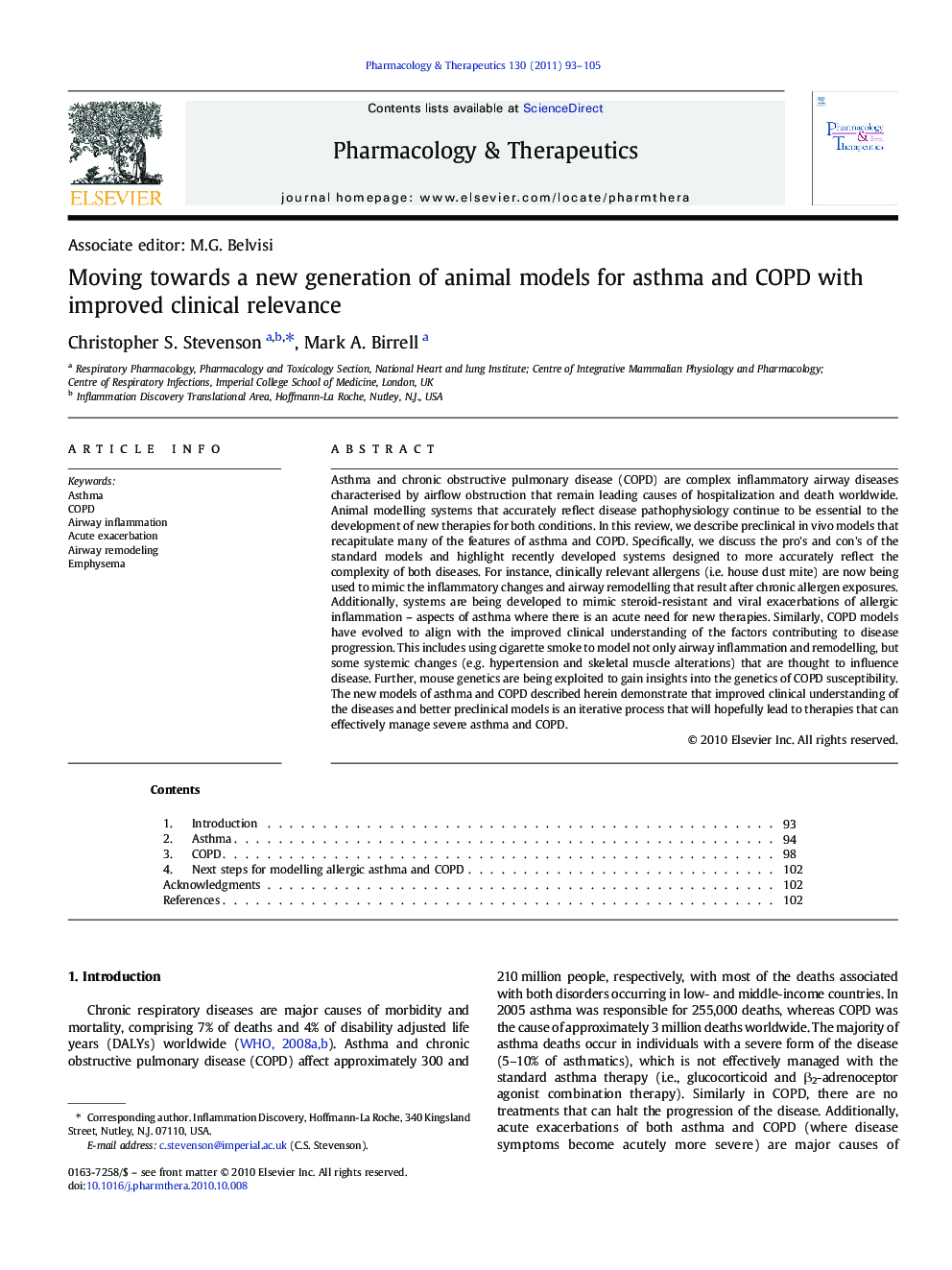| Article ID | Journal | Published Year | Pages | File Type |
|---|---|---|---|---|
| 2563388 | Pharmacology & Therapeutics | 2011 | 13 Pages |
Asthma and chronic obstructive pulmonary disease (COPD) are complex inflammatory airway diseases characterised by airflow obstruction that remain leading causes of hospitalization and death worldwide. Animal modelling systems that accurately reflect disease pathophysiology continue to be essential to the development of new therapies for both conditions. In this review, we describe preclinical in vivo models that recapitulate many of the features of asthma and COPD. Specifically, we discuss the pro's and con's of the standard models and highlight recently developed systems designed to more accurately reflect the complexity of both diseases. For instance, clinically relevant allergens (i.e. house dust mite) are now being used to mimic the inflammatory changes and airway remodelling that result after chronic allergen exposures. Additionally, systems are being developed to mimic steroid-resistant and viral exacerbations of allergic inflammation – aspects of asthma where there is an acute need for new therapies. Similarly, COPD models have evolved to align with the improved clinical understanding of the factors contributing to disease progression. This includes using cigarette smoke to model not only airway inflammation and remodelling, but some systemic changes (e.g. hypertension and skeletal muscle alterations) that are thought to influence disease. Further, mouse genetics are being exploited to gain insights into the genetics of COPD susceptibility. The new models of asthma and COPD described herein demonstrate that improved clinical understanding of the diseases and better preclinical models is an iterative process that will hopefully lead to therapies that can effectively manage severe asthma and COPD.
